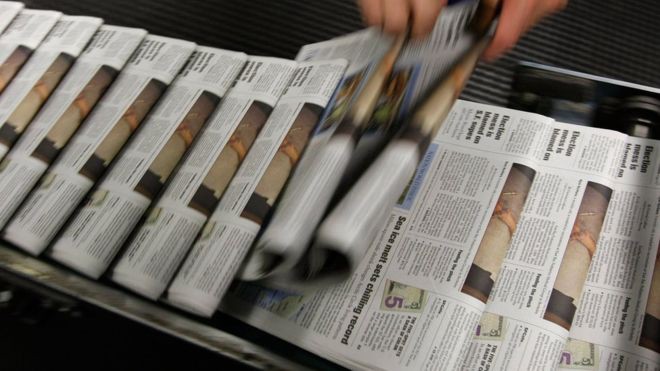Insights
Is Trust in Media on the Rise? Yes… For Now..

In October, Gallup released a report which found that 45 percent of Americans say they have a “great deal” or a “fair amount” of trust in mass media to report the news fully and accurately, which is a big jump from the 32 percent low in 2016. Last month, a groundbreaking study from Louisiana State University’s Manship School of Mass Communications found that new methods of countering bias, employed by members of the fourth estate, may account for the sudden rise in trust.
As The Louisiana State University study suggests, journalists can counter perceived bias and reclaim legitimacy in the eyes of critical public by outrightly defending their profession and being transparent about sources and fact-checking. This is not a traditional measure — typically the media bias debate is one-sided, with outlets choosing to remain silent despite accusations. Fact-checking has always been simply a part of the editorial process and a given in good journalism. As it turns out, explicitly publishing and exposing internal protocols for public review evokes a positive response and results in gains in trust:
- Participants responded positively to evidence of fact-checking in stories (mainly opinion pieces) that defended journalism.
- Political affiliation did not have a differentiating effect on these results. Republicans began with an overall lower amount of trust, but their response to fact-checking and defense of journalism mirrored the response of Democrats and independents.
- These results are especially interesting when compared with those found in a 2018 report from Gallup and the Knight Foundation. At the time, 21 percent of Republicans reported not trusting any news organizations, which is more than US adults overall (16 percent) and Democrats (two percent).
- The trust gap may be bigger among Republicans, but not impossible to overcome.
The rapid proliferation of media distrust was some of the most worrisome fallout of the 2016 election. As a result, audience tunnel vision has become more exaggerated than ever, especially with new subscription services like Fox Nation (which claims to be “opinion done right” for those “feeling left out”) on the rise. If consumers don’t like what they’re seeing, they can pay for viewpoints that reinforce their beliefs without conflicting perspectives from the opposition. All of this has made it harder to reach diverse audiences and has effectively pigeonholed messaging — you can reach an audience that might agree with what you’re saying, but won’t be trusted or will be automatically discounted by the other side.
The recent rise in media trust is surprising for a couple of reasons. One, because these results came in the final days of a contentious, dramatic and hyperpolarized election cycle (veritable bait for a media frenzy and the accompanying accusations of bias that are flung from each side of the aisle), and two, because trust in media had been backsliding since the late 70’s before dropping sharply in 2016. Conservatives who disagreed with traditionally left-of-center outlets found their reporting suspect and lacking in evidence to prove otherwise (and vice versa for liberals and traditionally conservative media). Bias was compounded and entrenched to a seemingly irrecoverable degree. But research shows that news outlets don’t have to conduct an editorial overhaul or change their core identities to be regarded as trustworthy.
There will always be partisan media in the U.S., and disagreement over fundamental beliefs is to be expected. It becomes an issue when disagreement turns to complete denial of any factual merit. As trust in media grows and the partisan freeze shows sign of thawing, the public relations industry has much to gain, but only if it is amenable to new standards of transparency and fact-checking. The trustworthiness of an outlet can impact the reputations of those who contribute to it, and, as trust declines, so does perceived integrity of content and sources. Lack of trust also makes it more difficult to reach a larger audience — you might be able to reach the audience that already agrees with your editorial perspective, but good luck getting to the one that doesn’t.
If the media must show that they’re making an effort to regain trust by visibly holding themselves and their sources accountable, then the PR industry must follow. It should be evident in content creation and media engagement that any and all assertions are based in research. We should be prepared to defend arguments with facts and data; the weight of a big name or a fancy title is no longer enough. Trust isn’t implied, it’s earned with evidence.